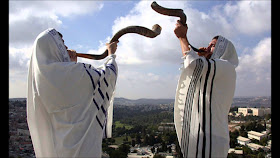My wife’s grandmother has told us stories of when she rode this magnificent boat up and down Okanagan Lake and having visited both the Okanagan Landing Station House Museum and the SS Sicamous Heritage Park my appreciation for this rich history has inspired me to write this little blog that will hopefully inspire others to look into the “Queen of Okanagan Lake”….
Her Birthplace – Okanagan Landing
Where the rail ended the boats began and Okanagan Landing became the gateway to the entire valley for both freight and people. To quote Ron Candy, former curator of the Greater Vernon Museum, “You can compare (Okanagan Landing) to the Kelowna International Airport of the time” (Vernon Morningstar). It was here where the SS Sicamous, the third of a line of stately CPR Sternwheelers, was assembled and, on May 19th, 1914, launched into the waters of Okanagan Lake. She was named for the town of Sicamous from whence the railroad came and it is said that the Native word means “Shimmering waters” or “River circling mountains”.
Today you can revisit this epic history with a trip to the Okanagan Landing Station House Museum and Art Gallery located alongside Paddlewheel Hall at Paddlewheel Park.
Her Building & Design
 |
| PC sssicamous.ca |
The ship was 228 feet long overall and 40 feet wide. She was originally built with five decks and a capacity for 500 passengers, 900 tons of cargo and 17 knots of speed. According to the Okanagan Historical Society Report of 1964, “The two cabin decks had 40 staterooms… four saloons, one observation lounge and one smoking lounge on each deck at the bow and the stern. … The 65-foot long dining room accommodated 48 persons at a sitting… Writing desks and reading lamps were on the balcony above the dining room. The staterooms, furnishings and fittings of the steamer were beautifully finished in British Columbia cedar and Douglas fir, Australian mahogany, and teak wood from Burma—a combination that gave an effect of unusual richness.”
The brass hardware was imported from Scotland and the entire ship had electric lighting and steam heating. In those older days, the men would have one end of the ship to fraternize in while the ladies and children would gather at the other end.
Her Ports & Landings
 |
| Okanagan Landing today |
One old timer who lived during the era of the sternwheeler enthusiastically tells of their signifance: “It is difficult now, No! Impossible to imagine the importance steamboats played before there were adequate roads. They were the only link to the outside; their passing told the hour. They came to shore, to the beach of a settler in answer to a fluttering flag and a whistle blast summoned a homesteader to his landing to receive freight, groceries or lumber, to pick up a crate or two of strawberries or to land a crock of Christmas rum. Sternwheelers were loved by those who dwelt along the lake. (OHSR 36:167)”
And whether it was the Landing, Kelowna, Penticton or anywhere in between locals would always gather when the ship came to the shore to see what treasures it bore that day.
Her Passengers
But more important were the everyday folks who populated the Valley and to whom the Sicamous was a lifeline for communication, travel and emergencies. Many local lake folks would even hop on the Sicamous to have a brief but well deserved vacation. The ship carried many of the workers that built the Kettle Valley Railway and also carried soldiers off to war and back home again - “At war's end she brought back the survivors and loudly announced their return with long blasts of her whistle as they neared their destination. (OHSR 28:31)”
 |
| PC Kelownabc.com |
It would be remiss to not mention the esteemed captains of the SS Sicamous throughout the years. They were: John C. Gore ( maiden voyage, June 12, 1914), George L. Estabrooks (1914), Otto L. Estabrooks (1915), William Kirby (1915), George Robertson (1915-1919), J.A. McDonald (1920), George Robertson (1921-1922) and finally Joseph B. Weeks (1923-1937).
Her Resting Place – Penticton
This is the point where nearly all sternwheelers soon met their end – but not the SS Sicamous. She is, in fact, the largest sternwheeler left in all of Canada. Although the mighty ship could have ended up working the frigid waters of the North West Territories, the CPR, fortunately, was determined to preserve it as a heritage marker. In 1949 the City of Penticton purchased this grand boat for $1 from the CPR and 2 years later she was floated down the lake and beached at her present site on the north shore of Penticton.
Integral in this process was the Penticton Gyro Club, the City of Penticton and eventually the SS Sicamous Marine Heritage Society (est. May 1988) which has restored the boat and operates her now. For many years while in Penticton the SS Sicamous served as the local museum and then as a variety of restaurants. Today, under the guidance of the SMHS, she is displayed in her former glory for the elder to reminisce and the younger to learn of our beautiful history. A visit to the SS Sicamous Heritage Park will bring back the wonder of the days when sternwheelers were the queens of Okanagan Lake.
"The LORD is my shepherd;
I shall not want.
He makes me to lie down in green pastures;
He leads me beside the still waters.
He restores my soul..." Psalm 23
Sources & Further Reading:
sssicamous.ca
The Okanagan Historical Society Reports ( Various) : https://open.library.ubc.ca/collections/ohs
SS Sicamous Heritage Park Pamphlet
Wikipedia











